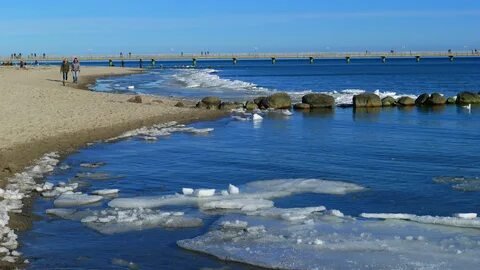The Ostsee Baltic Sea invites visitors with its sandy beaches, charming towns, and rich maritime traditions. Coastal tourism thrives across Germany’s Baltic coast, drawing holidaymakers to resorts, promenades, and historic piers.
Geography and Ecology of the Ostsee Baltic Sea
This sea—a brackish arm of the Atlantic—is bordered by nine countries including Germany, Poland, Sweden, Finland, and Russia. It stretches about 1,600 km long, with a varied depth—from shallow bays to deep basins exceeding 400 m.
Freshwater from rivers like the Oder, Vistula, and Neva dramatically reduces salinity. This creates unique water layers—haloclines—that limit oxygen mixing and challenge the marine ecosystem.
Baltic Ports and the Fishing Industry
Ports such as Hamburg, Gdańsk, and Copenhagen are vital for shipping and coastal commerce. The fishing industry, once abundant with cod and salmon, now grapples with collapsing stocks due to overfishing and ecosystem stress.
In Poland, many small-scale fishermen struggle. One restaurateur shared: “Fishing in the Baltic is dead in Poland… cod and salmon… used to be our main source of income.” Efforts are underway—fishing bans and reduced quotas—but recovery remains slow.
Marine Ecosystem & Environmental Protection Efforts
The Baltic Sea faces serious threats from eutrophication, dead zones, and harmful substances. Around 30% of the seabed is deoxygenated, with 20% entirely devoid of oxygen.
International cooperation through the Helsinki Convention and HELCOM (Baltic Marine Environment Protection Commission) drives pollution control and habitat restoration. Ecosystem-based management—combining biological, social, and economic factors—is central to protecting marine life.
Reports also highlight the Baltic’s ecosystem services: fish biomass, water purification, carbon storage, and recreation—worth billions in cultural and economic value.
Coastal Tourism: Charm Meets Sustainability
The Baltic coast charms with white sandy beaches, grand resort architecture, and scenic promenades. Locations like Usedom and Rügen charm with family-friendly attractions and chalk cliffs.
Tourism depends on a healthy marine environment. A 2008 study found that environmental shifts in fisheries and water quality directly impact tourism and recreational fishing businesses.
Climate Change and Coastal Resilience
Climate change intensifies pressures—warming waters, stronger eutrophication, and reduced ice cover. Responses include the HELCOM Action Plan 2021 for stronger resilience and marine ecosystems.
LNG Development and Environmental Concerns
Germany’s new Mukran LNG terminal on Ruegen Island, approved in 2024, bolsters energy supply but raises environmental and tourism concerns.
Strategic Importance of the Baltic Sea
The Baltic Sea remains geopolitically vital. NATO’s “Baltic Sentry” operation protects undersea infrastructure like telecom and power cables. A new NATO naval HQ in Rostock underscores the region’s security importance amid rising tensions.
Conclusion
Ostsee Baltic Sea is more than a travel destination—it’s a complex ecosystem rich in history, tourism, and maritime culture. Preserving its health through sustainable fishing, pollution control, and climate resilience is vital. Regions that elegantly balance tourism, environmental protection, and strategic infrastructure have the best shot at a thriving future.
FAQs
1. What makes the Ostsee Baltic Sea unique?
It’s a brackish, enclosed arm of the Atlantic, low in salt, with layered water that limits oxygen—creating a unique marine ecosystem.
2. Why are fish stocks collapsing?
Decades of overfishing, nutrient pollution, and deoxygenation have decimated key species like cod and salmon.
3. How does tourism depend on environmental health?
Resort towns and fishing-based businesses rely on clean water, abundant fish, and scenic coastlines. Environmental decline hits tourism hard.
4. What is HELCOM doing?
HELCOM enforces the Helsinki Convention and marine strategies promoting pollution reduction, biodiversity, and ecosystem recovery.
5. Are there security threats in the Baltic Sea?
Yes. NATO patrols to protect cables and ports in response to sabotage threats and heightened regional tensions.

